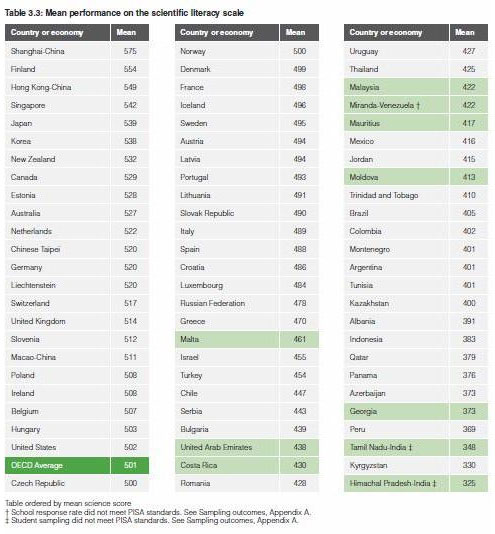Singapore & Malaysia – A comparison of public education systems (Part 2)
Published by SchoolAdvisor | Feb 20, 2013This article is a continuation of Part 1 in this series comparing the government run education system between Singapore and Malaysia.
Although it's been proven that both Malaysia and Singapore’s public education systems are fairly similar, why are a lot of Malaysian parents still sending their children to our neighbouring country? We asked around and found these answers:
Medium of learning

The first key difference is this - In Singapore, all public schools instruct in English. Interestingly enough, the situation was once the same in Malaysia, beginning from the time when the colonial British powers introduced English medium schools into Malaysia, phasing out many Malay medium schools. This lasted until about 1970, when the Malaysian government began to reverse the process, phasing out English medium schools and replacing them with KBSM curriculum and Malay medium schools completely by 1983. In 2003, then Prime Minister Mahathir Mohamad did an about-face, declaring that science and mathematics would be taught in English, a policy that the government sought to abolish no less than four years after its inception.
Better reward for high achievers
 The second key difference is this, the Singaporean system serves high achievers better. Brand differentiation certainly exists amongst schools in Malaysia; among public schools, this is judged by schools’ performance in the SPM examinations, top performing public schools including the likes of SMK Convent Bukit Nanas, the MRSM schools, and SMK(P) Sri Aman, which regularly top the SPM ranking tables in terms of numbers of A’s and overall achievement.
The second key difference is this, the Singaporean system serves high achievers better. Brand differentiation certainly exists amongst schools in Malaysia; among public schools, this is judged by schools’ performance in the SPM examinations, top performing public schools including the likes of SMK Convent Bukit Nanas, the MRSM schools, and SMK(P) Sri Aman, which regularly top the SPM ranking tables in terms of numbers of A’s and overall achievement.
It is a hasty generalisation to make that Singaporean public school teachers always serve their students better, but there is evidence that, at the very least, that Singaporean teachers can serve their very best better, for if there is one thing that Singapore does that we do not do here in Malaysia, it is to acknowledge talent and perform by meritocracy.

In Malaysia, the intention is there, but the means of execution typically does not succeed. After the PMR examinations, students are streamed into the Science and Arts streams, the consequence of this being that students take a different subject combination relative to their peers. Too often, the ‘best and brightest’ are demarcated simply by the subject combinations that they take and the number of A’s they receive, producing batch after batch of students cookie-cutter aligned to a standard of excellence that bears little relation to the professional world.However, education is not so homogeneous and one-dimensional. Exceptionally gifted students in Singapore are given access to the Integrated Programme (IP) after the PSLE (Singaporean equivalent of UPSR), and students are given access to academic material beyond the scope of the typical Singaporean curriculum, allowing them to skip the O’Level examinations and do only the A’Level examinations instead.
Cost saving
 Thirdly, Singapore does all of these things more efficiently, and for a cheaper price. In Singapore, there is choice in terms of school selection if you are part of the elite. A quick analysis of H2 mathematics papers will show that the syllabus in Singaporean Junior Colleges covers a scope far wider than that of Malaysia’s STPM or Matriculation courses. The “top” public school in Singapore is widely known as Raffles Institution, known also as the “Gateway to the Ivy League”. Similarly famous competitors such as Hwachong Institution and Victoria Institution follow behind, catering to local students for a fraction of the price that private institutions in Malaysia charge. Additionally, foreign universities often stand in apparent acknowledgement of the dominance of the Singaporean model of education. The country boasts of the highest per capita Cambridge admit rate in the world, while the Malaysian school system continues to be left languishing amid discussions whether English medium science and mathematics education is suitable.To some extent, while the Singaporean model provides the sort of education that many Malaysians who frequent this site actively seek for their children, it is not without its failures, though these failures sound hauntingly familiar to those of us who have been reading the newspaper as of late. Whereas the Singaporean public education system is criticised by some academics for excessive emphasis on rote learning and subsequently producing graduates who lack critical thinking faculties, employers also often cite the familiar tune that Malaysian graduates are ‘unemployable’ for the same reason, with added vitriol in the form of criticism of our ability to converse in English.What lessons can we draw from public schools and education policy across the causeway? Do we prevaricate and pontificate that the Singaporeans are getting a better public education than us? Yes, they use better English than us, they stream their students slightly more than us. They consistently perform in the top 5 when it comes to international education surveys.Regardless of the semantics, it’s clear that Malaysia has something to learn from the Singaporean public education system. Until there is a serious and concerted effort to work towards improving public education here in Malaysia, private and international schools here in Malaysia will stand to fill gaps, unlike in Singapore, where their role is to supplement what already exists.
Thirdly, Singapore does all of these things more efficiently, and for a cheaper price. In Singapore, there is choice in terms of school selection if you are part of the elite. A quick analysis of H2 mathematics papers will show that the syllabus in Singaporean Junior Colleges covers a scope far wider than that of Malaysia’s STPM or Matriculation courses. The “top” public school in Singapore is widely known as Raffles Institution, known also as the “Gateway to the Ivy League”. Similarly famous competitors such as Hwachong Institution and Victoria Institution follow behind, catering to local students for a fraction of the price that private institutions in Malaysia charge. Additionally, foreign universities often stand in apparent acknowledgement of the dominance of the Singaporean model of education. The country boasts of the highest per capita Cambridge admit rate in the world, while the Malaysian school system continues to be left languishing amid discussions whether English medium science and mathematics education is suitable.To some extent, while the Singaporean model provides the sort of education that many Malaysians who frequent this site actively seek for their children, it is not without its failures, though these failures sound hauntingly familiar to those of us who have been reading the newspaper as of late. Whereas the Singaporean public education system is criticised by some academics for excessive emphasis on rote learning and subsequently producing graduates who lack critical thinking faculties, employers also often cite the familiar tune that Malaysian graduates are ‘unemployable’ for the same reason, with added vitriol in the form of criticism of our ability to converse in English.What lessons can we draw from public schools and education policy across the causeway? Do we prevaricate and pontificate that the Singaporeans are getting a better public education than us? Yes, they use better English than us, they stream their students slightly more than us. They consistently perform in the top 5 when it comes to international education surveys.Regardless of the semantics, it’s clear that Malaysia has something to learn from the Singaporean public education system. Until there is a serious and concerted effort to work towards improving public education here in Malaysia, private and international schools here in Malaysia will stand to fill gaps, unlike in Singapore, where their role is to supplement what already exists.
Don’t forget to LIKE us on Facebook and receive updates and consultation on all matters related to Private and International schools in Malaysia.
RELATED ARTICLES
A Guide to Finding the Right School
A Look at Chinese Schools in Malaysia
International Schools in Malaysia
Jokowi: People's President Chose Private Education for Son
Recent Articles
- How Studying at Three International Schools Shaped Isabelle Leung’s Path to Law
- A Home Away from Home Where Your Child Will Thrive
- Bridging Borders: Ng Gha Yuan’s Journey to the Ivy League
- Why More Malaysian Parents Are Choosing International Schools for Their Children
- Happiness vs. Academics: Are We Sacrificing Our Children’s Well-Being for Better Grades?







 Login with Google
Login with Google